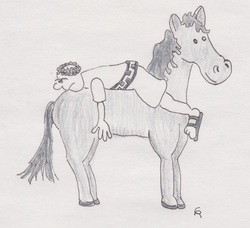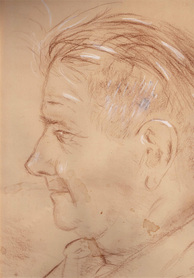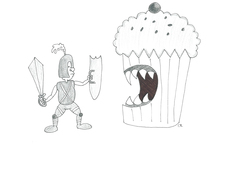
Early drunk drivers were probably inebriated people who jumped on horses, camels or elephants. The reason for the excesses wasn’t because a new bar had appeared on the other side of town. Before bottled water, beer and wine were the only beverages that didn’t cause death and disease. Slaves, who likely consumed one and a half gallons of beer a day, built the Great Pyramid at Giza. While these guys likely walked home from work, it is easy to imagine that the upper-class of Egypt and Rome might have driven their chariots under the influence. Attila the Hun, who died in 445 of an alcohol overdose, was usually pictured on his horse, likely riding inebriated.
Moving ahead historically, there have been plenty of drunken horse-drawn carriage drivers, and when the bicycle was invented in the 1800s, more than a few intoxicated types undoubtedly fell off them. George Smith, a cab driver in London holds the distinction of being the first to be arrested when in 1897 he crashed into a building.
Until 1917 when states began issuing licenses, drivers in the United States swerved and crashed without benefit of regulation, Then the debate over personal responsibility behind the wheel began – for some a confusing mix or laws, personal freedom and public safety. Barron H. Lerner in his 2011 book One For The Road, Drunk Driving Since 1900 walks us through the fluidity of our country’s attitudes about those that cause mayhem.
The author relates that on June 3, 1984, New York Times op-ed piece by a Philip B. Linker, an associate professor of English at Suffolk County Community College, describing how he had driven home the previous Saturday. Linker continued: “…the Saturday before that, and the one before that, in what probably amounts to a fairly consistent pattern over the last 25 years, ever since I have been licensed to drive.” The piece entitled “Drinking and Driving Can Mix,” concluded that it was possible to drive drunk successfully.
Ironically, the professor admired the efforts of MADD, Mothers Against Drunk Drivers and RID, Remove Intoxicated Drivers, and their publicized efforts to get stronger laws passed, be he was concerned about excessive regulation.
Those who responded negatively to the professor pointed out that 25,000 Americans had died in alcohol related crashes in 1983, ninety-seven in the professor’s own Suffolk county.
When the author was interviewed on NPR (November 17, 2011) Lerner talked about Margaret Mitchell, the author of Gone with the Wind, who was struck and killed by a drunk driver while crossing the street in Atlanta in 1949. The driver had 22 previous arrests, including speeding and drunk driving. Initially her fans were horrified, but over time the attitude changed and outrage was replaced with, 'Well, it was her time to go.' Victims of drunk drivers, the author says were thought to have been ‘at the wrong place at the wrong time.’
Alcohol attitudes and practices were revisited on January 17, 2012 on NPR with Dr. Robert Brewer, of the CDC’s Alcohol Program and Dr. Bankole Johnson, chair of the University of Virginia’s Department of Psychiatry and Neurobehavioral Sciences. Dr. Brewer reported that The Centers for Disease Control and Prevention has found that binge drinking, usually associated with young people, is an issue among adults as well, specifically adults over 65.
He reported that one in six adults 18 and older, about 38,000,000, report binging one or more times within a month. The researchers defined binging as four or more drinks for a woman and five or more for a man within a 2-3 hour period. But the actual amount consumed was well above that in quantity and frequency, typically 8 or more drinks, not one a month, but once a week! Neal Conan, the host, asked what else the researchers found surprising?
Brewer found it interesting that people who binged the most frequently were not necessarily those who consumed the highest quantity in a single episode. And when they looked at income, they found that the prevalence of binge drinking is elevated in people with higher household incomes and higher educational level, but the amount consumed per binge was actually higher among those with lower household incomes.
Why we drink or drink to excess is a complicated mix of cultural influences, advertising, genetics and the initially pleasant euphoria of our favorite legal mind-alterer. In the years when I was teaching drug resistance education in the Public Schools, I learned that in order to have credibility, it was essential to be honest. Most kids understand without being told, that drinking does not always cause throwing up and brain damage. They get that Grandma and Grandpa are having fun. But getting back to professor Linker –we no longer argue that one can be margarita-impaired and capable of maneuvering a one-ton vehicle. Hopping on a well-trained horse is not the only alternative. When Frank Sinatra last recorded One More For The Road it was as a duet with Kenny G. I’m guessing Mr. G was his Designated Driver.


 RSS Feed
RSS Feed
